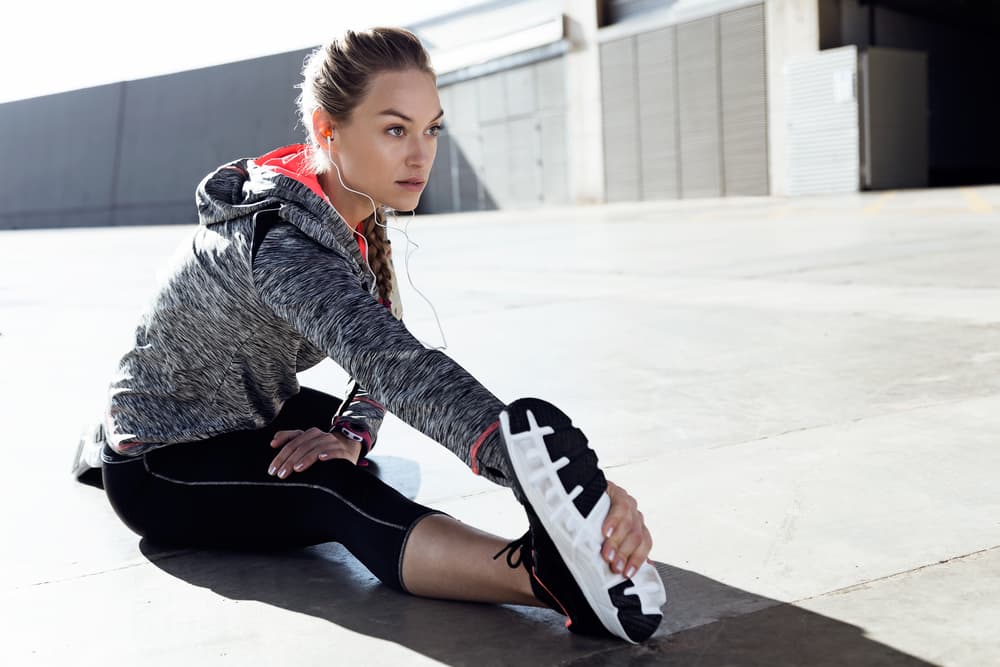Whether knee pain when climbing stairs, hip pain on long walks, pain in the elbows or wrists when doing housework or gardening: joint pain manifests itself in many ways. The automatic reaction of many of those affected is a protective attitude and the abstinence from sport – a fallacy, because staying in motion often brings relief. Find out in this article which joint-gentle sports you can take to combat your joint pain.

6 Sports For Knee Pain
Aqua Jogging, Water Aerobics And More
Aqua jogging and water aerobics take advantage of the natural resistance, pressure and buoyancy of water. Through the exercises you train your stamina, strength and coordination – with minimal stress on the joints. Various courses take place in swimming pools or fitness and wellness centers in many places. The offer is wide-ranging: maybe aqua aerobics, aqua boxing, aqua dancing or aqua zumba is something for you? If you prefer to train on your own instead of in a group, but don’t want to do without the element of water, swimming is a good idea.
To Swim
Swimming proves to be a good full-body workout, with the water making you feel comfortable and your body weight not putting stress on your joints. Swimming is therefore ideal for anyone who wants to do something about their excess weight. Keep the movement controlled so as not to put too much strain on your cervical spine and knees, and improve your technique if necessary by enlisting the help of a trainer. This is how you benefit from a good cardiovascular workout that burns a lot of calories and strengthens your muscles.
Rowing
Whether on the water or on the rowing machine at home or in the fitness center – the flowing movements when rowing are easy on your joints, but they use about 80% of the muscle groups in the body. This includes arms, shoulders, back, stomach, thighs, buttocks and calves. Strengthening the muscles and strengthening your cardiovascular system have a positive effect on the performance of your entire body and your endurance with regular training. Furthermore, rowing usually burns more calories than other endurance sports.
Cross Trainer
Another fitness device for cardio training, which is recommended for joint problems, is the elliptical or cross trainer. This is particularly useful as an alternative to jogging that is easy on the knees, since the entire body weight does not rest on the knees during training. Instead of an unpleasant shock load, the cross trainer is characterized by elliptical movements that are carried out gently and in a controlled manner – the knees are always slightly bent and the arms are also used to relieve the legs of a little work.
Cycling Or Ergometer Training
Even those who pedal moderately are doing something good for their knee joints and hips – whether on a bicycle or e-bike outside in the fresh air or on the home ergometer. This form of training, with its cyclical movement sequences, does not require any pressure or impact on the joints with a small translation or low resistance. The body weight also bears a large part on the bicycle saddle, so that the knee joints can be moved freely and unencumbered. With a high pedaling speed, the fun and the effort are by no means neglected..
Nordic Walking
Poles are also used in Nordic Walking – on the one hand to relieve the ankles, knees and spine, since the body weight is not solely on the legs. The movement of the arms also works other muscle groups, such as the chest and shoulders. This increases the energy turnover and accordingly more calories are burned than when hiking or simply walking. This makes Nordic Walking a demanding, effective and attractive sport in many ways. Running on the tartan track or soft forest floors is also particularly pleasant here.
